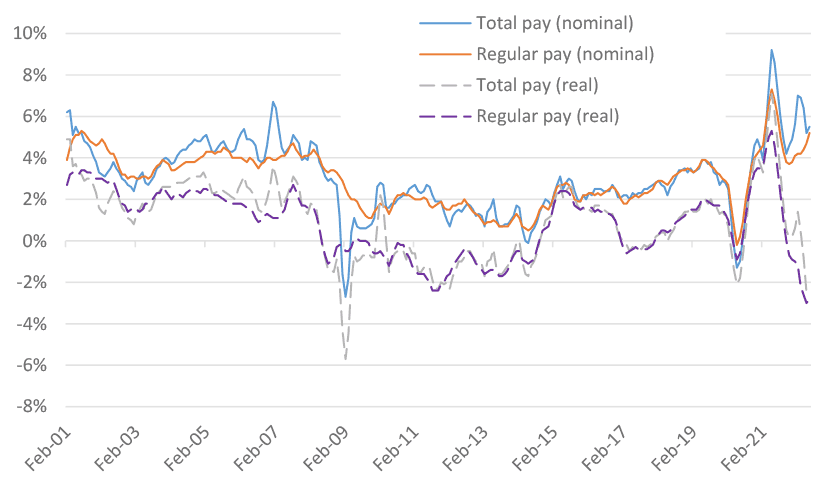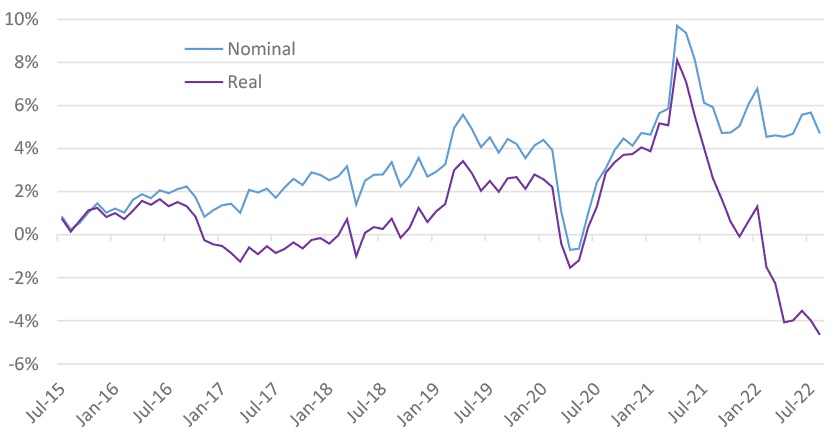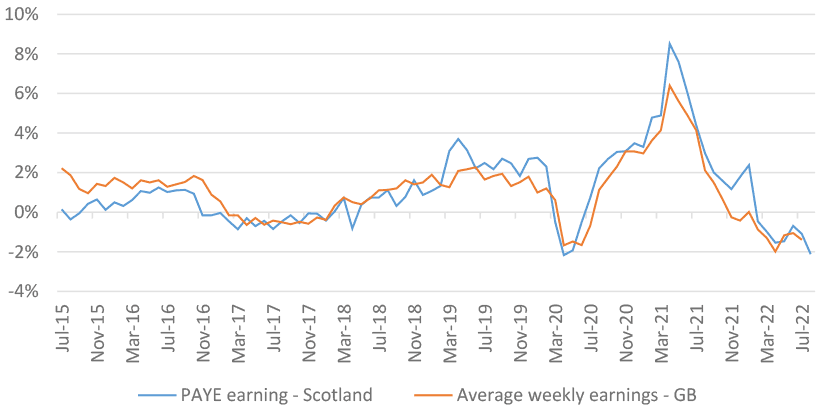Cost of Living Bill: economic background
Summarises recent economic trends which informed the development of the Cost of Living (Tenant Protection) Scotland Bill, which was introduced to the Scottish Parliament on 3 October 2022.
3. Trends in earnings
Increases in wages and benefits are not keeping pace with the higher inflation rate, meaning that in real terms households are worse off. The latest Scottish Fiscal Commission forecast (May 2022) was that real average earnings would fall by 2.7% in Scotland over the course of 2022-23.[5] More up-to-date data shows the extent of the squeeze on real earnings. The most recent data on average weekly earnings published by the ONS (May-July 2022) shows that across Great Britain, while total pay (5.5%) and regular pay (5.2%) were rising in nominal terms, these increases are insufficient to offset the increase in inflation, such that in real terms total pay fell by 2.6% and regular pay by 2.8% (Figure 2).

Source: ONS, Average weekly earnings in Great Britain
Figure 3, which uses pay data for Scotland taken from HMRC PAYE records, tells a similar story

Sources: ONS, Earnings and employment from Pay As You Earn Real Time Information, seasonally adjusted. Real pay calculated using all-items CPI from ONS, Consumer price inflation, August 2022.
The fact that the squeeze on household budgets is not just related to energy costs is illustrated by Figure 4 which deflates average weekly earnings for Great Britain and median pay in Scotland from PAYE records by the CPI excluding energy costs. This shows that both measures of earnings have moved into negative territory in recent months. As a result, households will struggle to cover non-energy related inflation, even before attempting to pay for energy bills, meaning they will either need to reduce savings or cut back on consumption, particularly poorer households who have low or no savings.

Sources: ONS, Earnings and employment from Pay As You Earn Real Time Information, seasonally adjusted and Average weekly earnings in Great Britain. The regular pay timeseries is used for average weekly earnings as it is less volatile than total pay, which includes bonus payments, but the trend for total pay is similar. Earnings data is deflated by the CPI excluding energy (time series DKC5 from ONS, Consumer price inflation time series).
Contact
Email: Bruce.Teubes@gov.scot
There is a problem
Thanks for your feedback